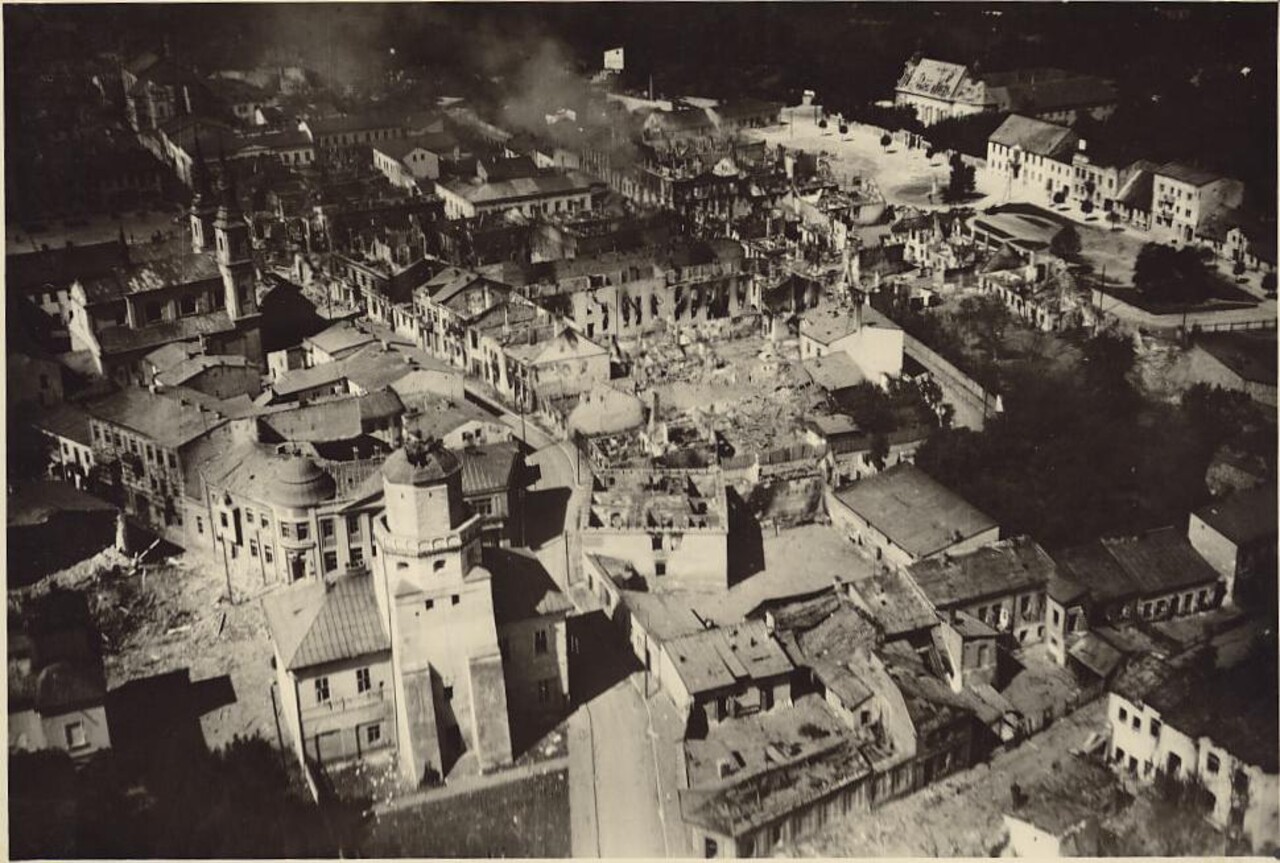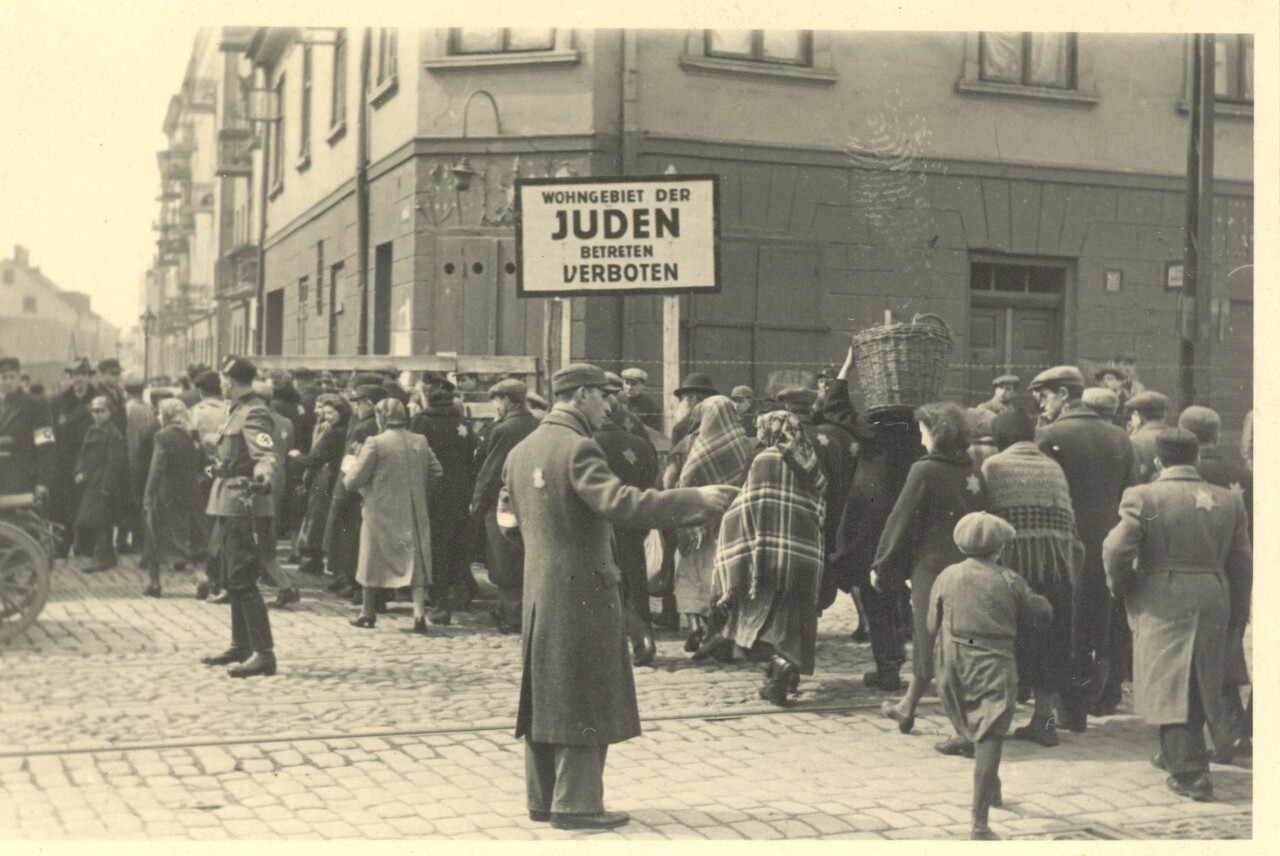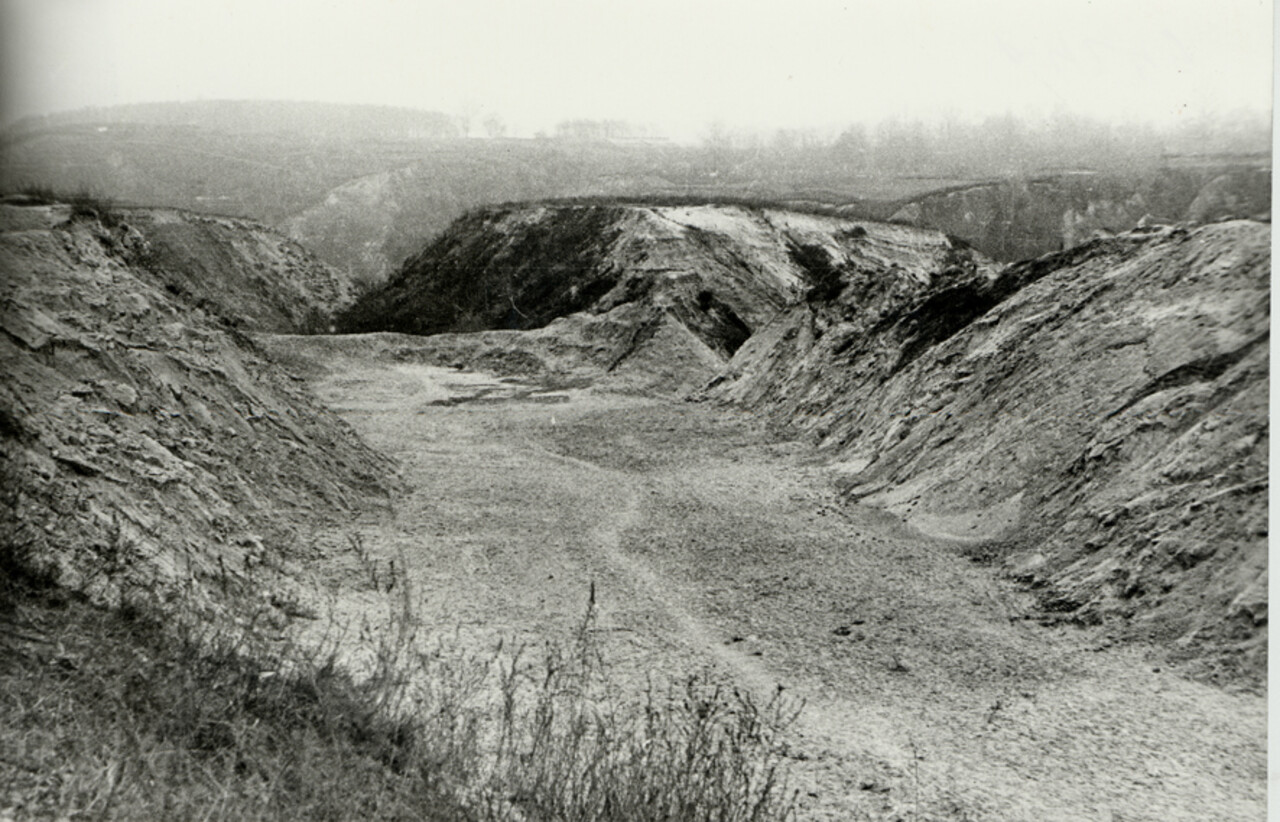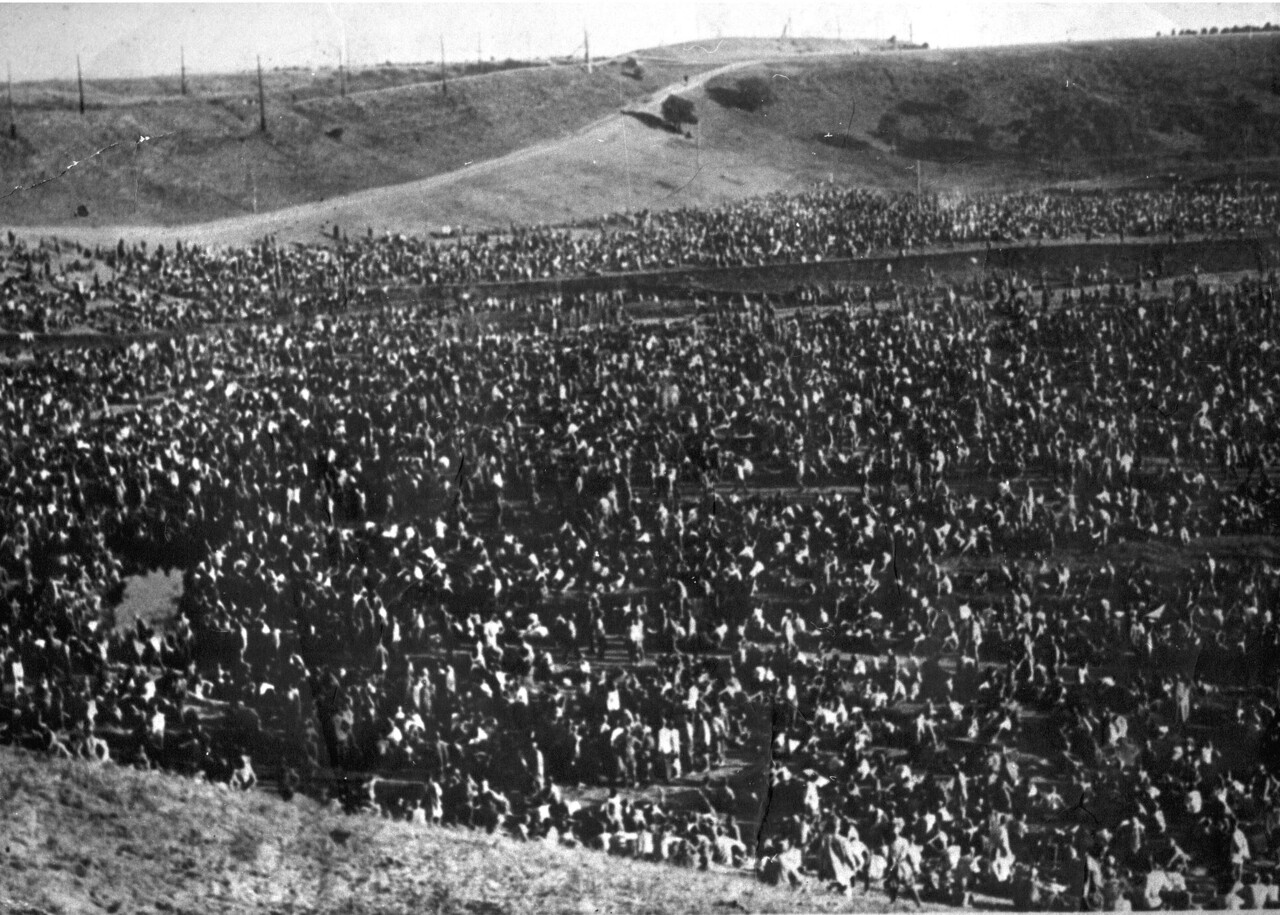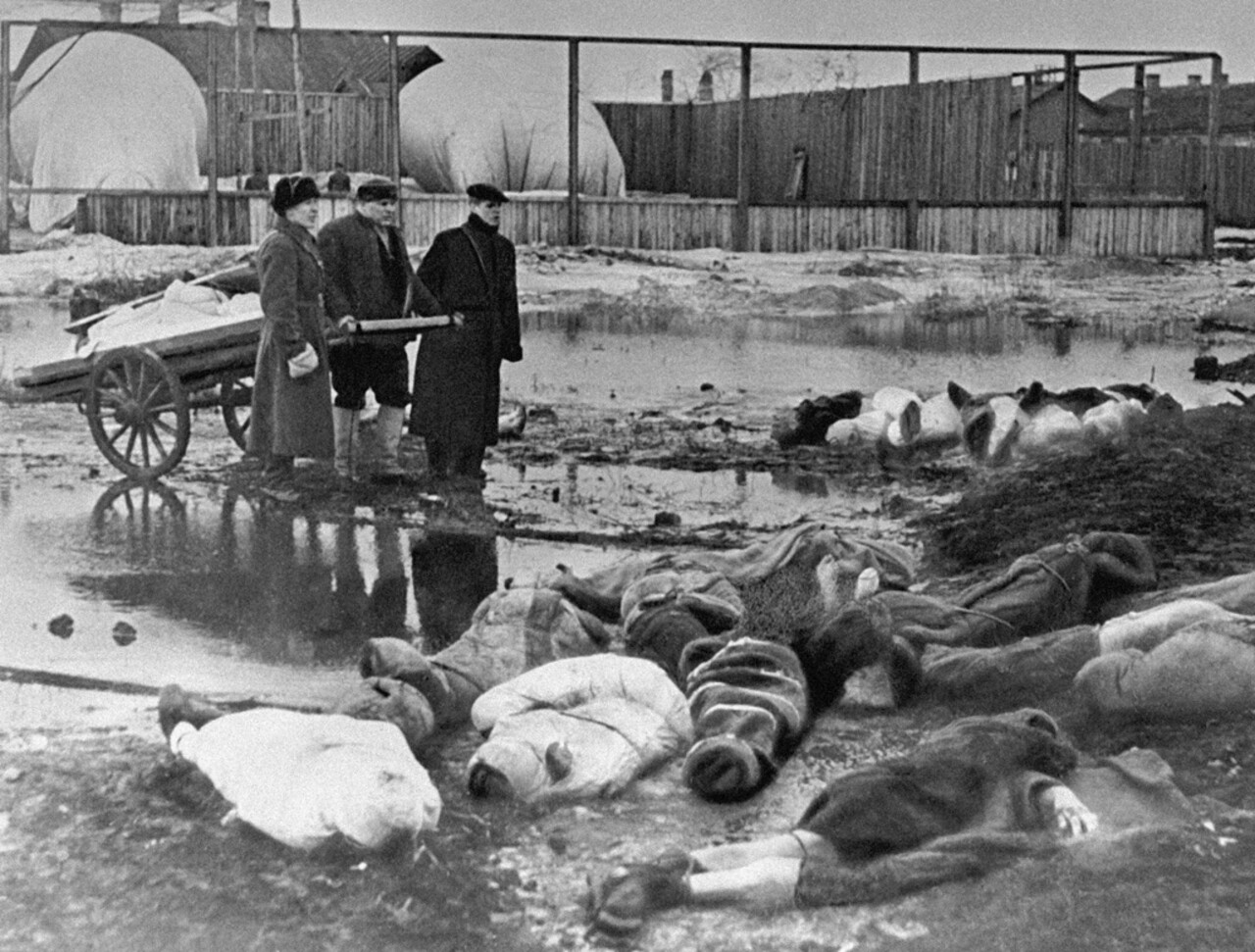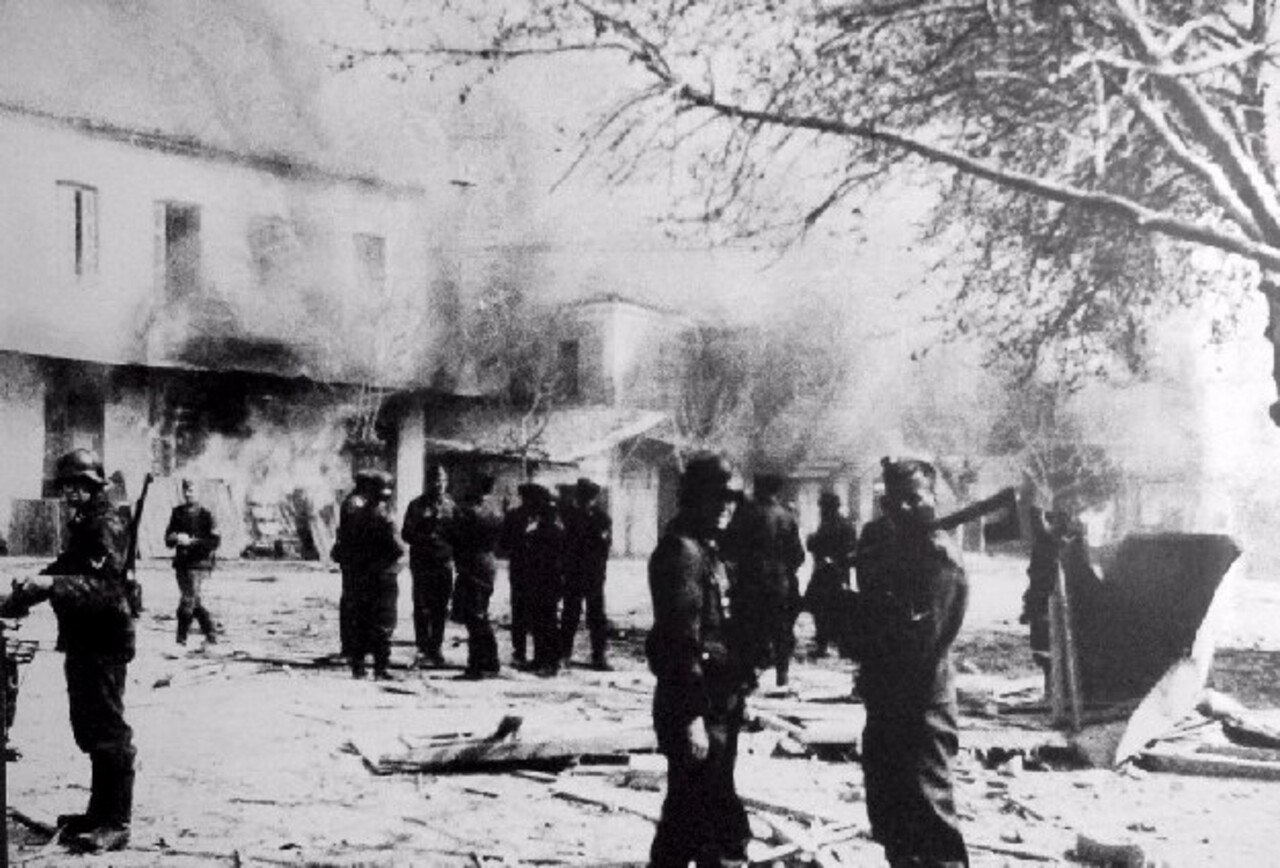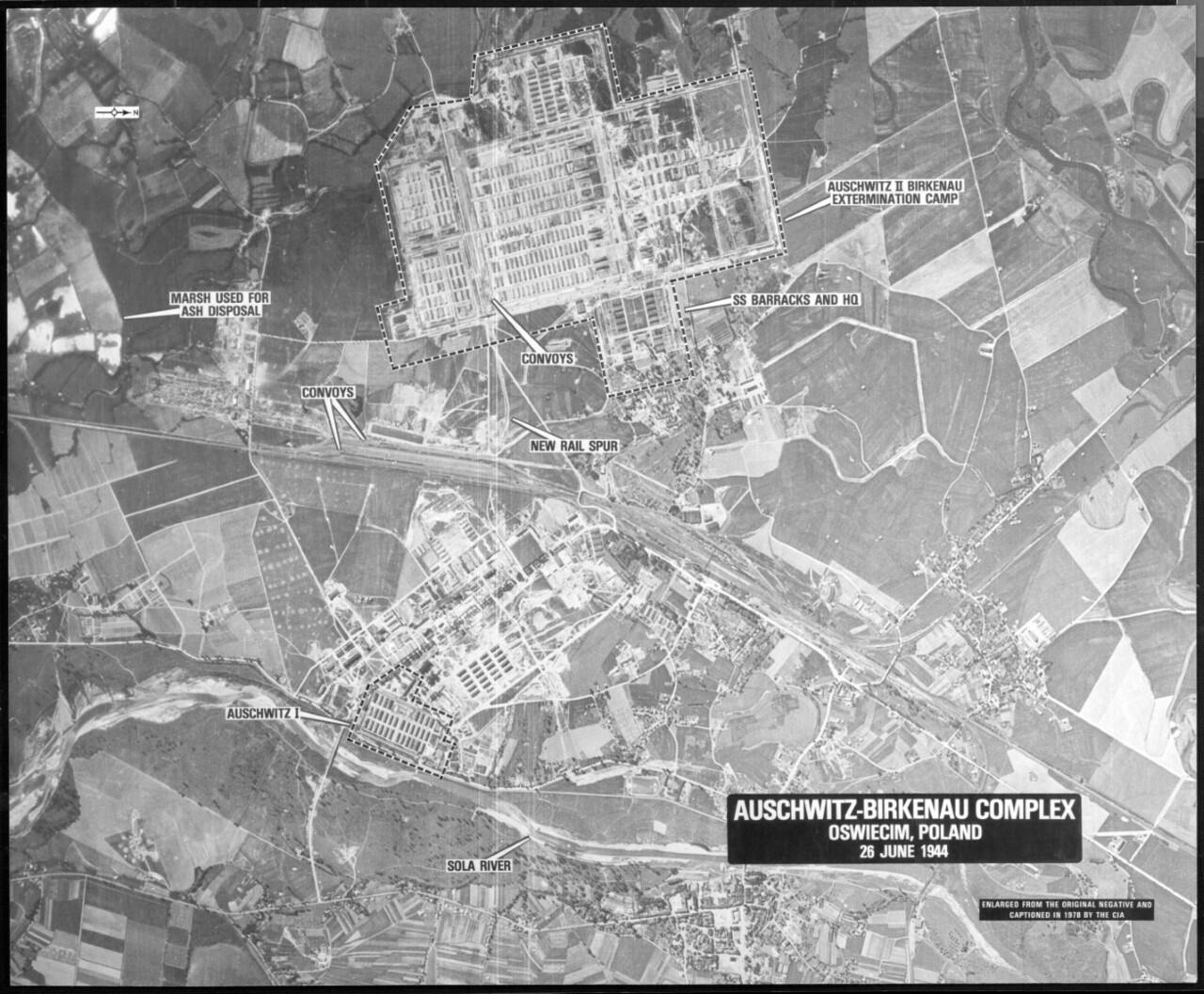The German War of Annihilation 1939 to 1945
Wieluń, 1 September 1939: In the early hours of the first day of the war, German dive-bombers attack the small Polish town to almost total destruction. Up to 1,200 civilians died. In the following years, hundreds of European cities are reduced to rubble as part of the German war of aggression: from Coventry in England to Minsk in Belarus, from Rotterdam in the Netherlands to Belgrade in Serbia.
Muzeum Ziemi Wieluńskiej, MZW-AF-6266
Litzmannstadt (Łódź) Ghetto, circa 1941: This ghetto, which existed from February 1940 to August 1944, was one of thousands of mostly sealed-off residential districts in the German-occupied east where Jewish children, women and men were obliged to perform forced labour and subjected to deliberate impoverishment. They were used by the SS as assembly points for deportation to the gas chambers or shooting pits. Six million Jews from across Europe were killed in the Holocaust.
Żydowski Instytut Historyczny, Warsaw
Babyn Yar ravine near Kyiv (Ukraine), late 1943: Members of SS-Einsatzgruppe C shot over 33,700 Jewish children, women and men here on 29/30 September 1941; photo taken by the Soviet »Extraordinary State Commission for the Investigation of National Socialist Crimes«. As early as autumn 1939, SS Einsatzkommandos began mass shootings of tens of thousands of members of the intelligentsia and clergy, as well as Jews, in conquered Poland. After the German attack on the Soviet Union in the summer of 1941, SS Einsatzgruppen (Mobile Killing Squads) carried out mass shootings of aproximately two million Jews until 1944/45. Thousands of Roma, disabled people, prisoners of war and resistance fighters were also among the victims.
Rossiskij Gosudarvstvennij Archiv Kinofotodokumentov, Krasnogorsk
Transit camp near Millerovo in Russia, May 1942: The Wehrmacht held up to 50,000 Soviet prisoners of war here in the open without food. During the German war of conquest, a total of around 3.5 million Red Army soldiers died in camps due to starvation, exhaustion and the spread of disease or murder.
Kraevedčeskij Muzej Millerovo
Leningrad (St Petersburg), 1 October 1942: Corpses in the Volkovo cemetery. Between September 1941 and January 1944, 1.2 million children, women and men died during the blockade. The ruthless exploitation of the conquered Soviet Union, as well as Poland and Greece, included the calculated starvation of millions of people.
RIA Novosti archive
Distomo, 10 June 1944: In a so-called reprisal after a partisan attack on German soldiers, SS units shoot over 200 people in the small Greek town. Throughout Europe - especially in Ukraine and Belarus – German units devastated entire regions, plundered hundreds of villages, burned them to the ground and murdered their inhabitants. During the suppression of the Warsaw Uprising from 1 August to 2 October 1944, more than a hundred thousand civilians were murdered and the city was then completely destroyed.
akg-images, 7786216
Auschwitz-Birkenau, 26. June 1944: Allied aerial photograph of the »extermination camp«. In the gas chambers of Auschwitz, Lublin-Majdanek, Belzec, Sobibor and Treblinka as well as in mobile gas vans in Chełmno (Kulmhof), Maly Trostenec, Soldau and Belgrade, German members of the SS and their helpers murdered around three million Jewish children, women and men as well as thousands of Sinti and Roma, patients from sanatoriums, Soviet prisoners of war, Polish resistance fighters and civilians of other nationalities. After its liberation on 27 January 1945, Auschwitz became a symbol of National Socialist crimes, especially the Holocaust.
National Archives and Records Administration, Washington D. C.
